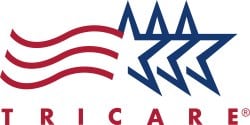The military health care system has several different health care plans available based on your military or family status. Active duty military members are automatically enrolled in Tricare Prime. Their family members generally have the option of enrolling in either Tricare Prime or Tricare Select. Military retirees usually have the same option, however, there may be times when they are required to enroll in Tricare Select because they live outside of the Tricare Prime enrollment area.
Prior to the year 2013, military retirees didn’t have as many location-based restrictions to joining Prime. However, Tricare made some Prime enrollment changes to simplify options and reduce costs. The resulting realignment meant that many military retirees and dependents lost access to Tricare Prime. Many military retirees, their dependents, surviving dependents, and Tricare Young Adult members who live more than 40 miles away from a military medical facility or base closure site were required to change their health care plan from Tricare Prime to Tricare Select.
These changes did not affect active duty military members or their families when they are stationed away from a local military treatment facility. This includes active duty members in remote assignments, education or training assignments, recruiting positions, and more.
Understanding Tricare Prime Service Areas

To enroll in TRICARE Prime you need to live:
- Inside a Prime Service Area, or
- Within 100 miles of a primary care manager (PCM)
Tricare Prime Distance and Drive Time Standards
According to the Tricare website, your drive time will determine if you can select a Primary Care Manager at a Military Treatment Facility or if you need to choose an in-network PCM.
When you enroll in TRICARE Prime, you should expect to drive no more than:
- 30 minutes to your PCM for primary care
- 60 minutes for specialty care
See the following scenarios:
Scenario 1: You live within 30 minutes of a military hospital or clinic.
- You’ll likely be enrolled at the military hospital or clinic.
- Check with your regional contractor to see if you are eligible to select a network PCM.
Scenario 2: You live more than 30 minutes from a military hospital or clinic.
- The military hospital or clinic will decide if they can accept your enrollment request.
- You’ll need to waive your drive time standards (see below).
- If you’re not able to enroll at the military hospital or clinic, you can select a network PCM.
Scenario 3: You live more than 30 minutes from a military hospital or clinic, but within 100 miles of a network PCM.
- You can select a network PCM.
- You’ll need to waive your drive time standards (see below).
Scenario 4: You live more than 100 miles from a military hospital or clinic.
- You can only enroll there if approved by the hospital or clinic commander and the TRICARE Regional Office.
- If not approved, you can select a network PCM (see Scenario 3).
Waiving Your Drive Time Standards
You may choose a Primary Care Manager at an MTF or an in-network provider that is outside of the 30-minute drive time standard, provided you are willing to waive your drive time standards when you enroll in Tricare Prime.
When you waive your drive time standards, you should expect to drive:
- More than 30 minutes to your PCM for primary care
- More than 60 minutes for specialty care
Tricare Prime Regions
Tricare Prime is broken into two regions – Tricare East Region and Tricare West Region. You can see the states in the following graphic from the Tricare website:
West Region
Health Net
1-844-866-9378
www.tricare-west.com
East Region
Humana Military
1-800-444-5445
www.tricare-east.com
More Tricare resources can be found in this guide.
Comparing Tricare Prime & Tricare Standard
To understand the impact of these changes, it’s important to understand how Tricare Prime and Tricare Select function. (Note: All figures apply to retirees and their dependents. Some numbers may vary depending on your status. Please visit the Tricare website for more information.)
Tricare Prime is a low-cost health care program. There is no enrollment fee for active duty members and their dependents, and there are no co-pays. Military retirees and their dependents have a fixed annual enrollment fee each year, and a small co-pay each visit. The FY2020 enrollment fees for retirees are $300 for an individual, or $600 for a family. The co-pays for retirees and family members are $20 per visit. There is a $3,000 catastrophic cap for retirees. Tricare Prime members are required to receive their health care from network providers.
Tricare Select is a fee for service health care program, which allows members to choose their own medical care providers. There is currently no annual fee, and certain preventive visits are available at no cost, including preventive care such as mammograms, vaccines, cancer screening, prostate examinations and routine check-ups. However, there are additional out of pocket expenses. For example, beneficiaries are required to pay 25% of the allowable charges out of pocket. There is an annual deductible of $150 per individual, or $300 per family (this is money that beneficiaries are required to pay before the insurance kicks in). The maximum out of pocket expense per family is $3,000.
Military retirees will transition into Tricare for Life once they reach age 65.
Cost Differences in Tricare Prime & Standard
Cost for Enrollment:
- Prime individual: Active Duty (None); Military Retiree ($300.00)
- Prime family: Active Duty (None); Military Retirees ($600.00)
- Select individual: None
- Select family: None
Cost for Deductibles:
- Prime individual: None
- Prime family: None
- Select individual: $150
- Select family: $300
Co-Pays:
- Prime individual: $0 per visit
- Prime family: $0 per visit
- Select individual: 25% of the allowable charges, up to $3,000 annual family limit
- Select family: 25% of the allowable charges, up to $3,000 annual family limit
Some preventive health examinations are also cost-free under Tricare Prime, so there is no co-pay for certain annual exams and preventive screening.
What to do if your Tricare plan changes. In some cases, Tricare members will be able to keep their current medical providers, even if they are moving from Tricare Prime to Tricare Select. If you are losing your Tricare Prime eligibility, then contact your physician to see if they provide service for Tricare Select members (many will provide service for both policies).
How will this affect you? If you are someone who doesn’t visit the doctor frequently, or only visits for annual screenings, you may come out ahead under Tricare Select. If you have other health needs, you may end up spending less under Tricare Prime. It’s important to note that the most you will pay out of pocket with Tricare Select is $3,000 per year, but you could spend significantly less, depending on your needs.




Comments:
About the comments on this site:
These responses are not provided or commissioned by the bank advertiser. Responses have not been reviewed, approved or otherwise endorsed by the bank advertiser. It is not the bank advertiser’s responsibility to ensure all posts and/or questions are answered.
Kurt J. says
I retired from the Navy in 2004, I presently have Tricare Prime. I’m not sure how this will affect a single veteran, as it says nor more than $3000.00 per year for a ‘family” with Tricare Standard. Also, can you provide a zip code listing of affected areas. And yes, I’m sure all these changes have a lot to do with Obama’s “healthcare plan”!!!
Deborah Amick says
I think these changes are utter bull as well. I feel like there are alot of people getting VA benefits who i don’t think should. I feel that benefits should be for the men and women who devoted their whole life to the military and retired and those men and women who served in a war and were injured or even gave their life and then their families should be taken care of. We could save alot by cutting that out.
Four years of service should not qualify people for a lifetime of medical coverage, glasses, hearing aids and medications. It has turned into a welfare coverage.
Brick By Brick Investing | Marvin says
While this is awful news, I’d like to thank you for providing the brief summary and tools that can be used.
Ryan Guina says
This is bad news – especially since it mostly affects those on fixed incomes. The good news is that TRICARE Standard limits family expenses to $3,000 out of pocket. The bad news is that many retirees can’t afford that much.